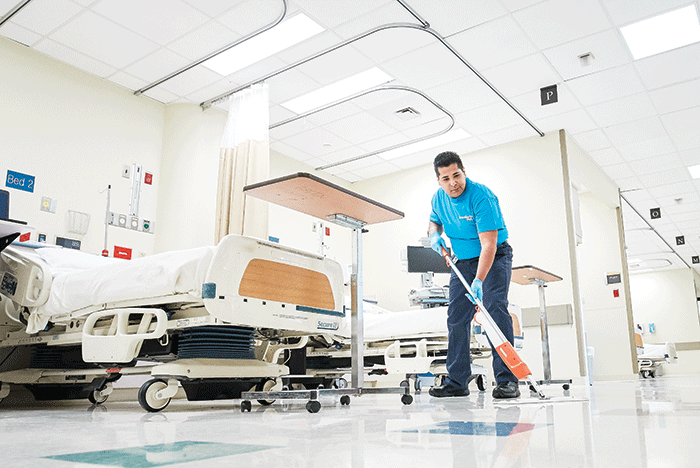EVS, regulations and infection
Health care-associated infections (HAIs) can be transferred a number of ways in hospitals, including catheters, transfusions, airborne particles and infected surfaces. The environment of care, including surfaces, is the responsibility of the environmental services (EVS) department.
The countertops, walls, furniture and fixtures can act as fomites, allowing infections to spread if not regularly disinfected.
In 2009, the U.S. Department of Health and Human Services (HHS) published the National Action Plan to Prevent Health Care-Associated Infections: Roadmap to Elimination. It was developed to help prevent HAIs in acute-care hospitals, ambulatory surgical centers and other health care facilities. The roadmap established guidelines and goals that are evaluated and revised every five years.
In 2016, HHS released new targets for various hospital HAI metrics using 2015 results as a baseline. Among the new goals: a 30 percent reduction in Clostridium difficile infections and a 50 percent reduction in MRSA infections by 2020. Many states impose penalties or disincentives for failure to follow state and federal infection prevention guidelines.
Regulation compliance is another reason EVS directors need a seat at the planning table when hospitals renovate or expand, and the regulations go beyond infection prevention. In addition to HHS, other agencies that govern health care facilities include the Centers for Disease Control and Prevention and the Centers for Medicare & Medicaid Services, which oversees monetary reimbursements for patients with government-assisted care.
Hospitals also answer to the Food and Drug Administration, Environmental Protection Agency and the Occupational Safety and Health Administration, among others.
The overlap of regulations, as well as the practical concerns of health, safety and efficiencies, reveal the need for all hospital departments to be involved in planning and designing new facilities, including EVS.
The goal of EVS is to eliminate the environment from the infection equation. It is uniquely positioned to take the lead on surface disinfection and create a healthier hospital environment for both patients and staff.



